Recent Water Damage Posts
Identifying Water Damage in Your South Florida Home
3/8/2023 (Permalink)
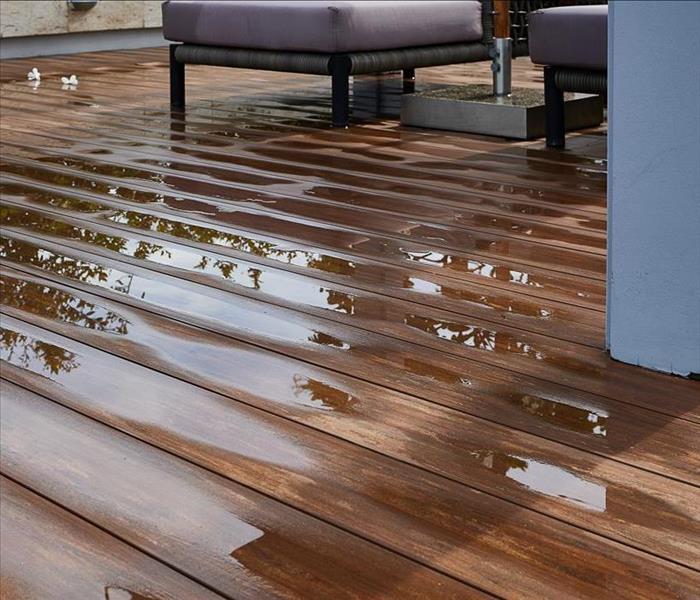 Do not allow water damage to go untreated. Early detection and resolution are the keys to water damage restoration.
Do not allow water damage to go untreated. Early detection and resolution are the keys to water damage restoration.
A recent federal assessment by the US Army Corps of Engineers found Florida to be among the most vulnerable areas at risk for storm-driven flooding. South Florida averages 52 inches of rain fall per year. South Florida lies close to sea level and is surrounded by major bodies of water, often leaving rainwater with no place to drain. The result of poor drainage is occasional flooding. Flooding can lead to severe water damage in your South Florida Home.
In addition to severe weather, water damage can be caused by leaky pipes, blocked drains, malfunctioning sprinklers, and a host of other reasons. Water damage is costly, making early detection and restoration vital.
How to Detect Water Damage
Water damage affects homes in a variety of ways. It discolors walls, warps floors, grows mold, and even weakens the foundation of homes. With early detection being critical, it is important to know how to look for water damage in your home.
- Odor. Water damage emits a persistent musty smell. It can come from mold behind walls and in areas that are frequently exposed to moisture. If a musty smell is present in your home, seek out the source of the odor. Look for wet spots and areas of mold growth.
- Stains on ceilings and floors. Water stains are a visible indicator of water damage due to a leak in your home. Stains on the ceiling can form from a leaky pipe or roof issue. Floor stains may be due to dishwasher or washing machine issues. Find the source of the leak.
- Warping and discoloration. Warped or sagging ceilings or floors are a tell-tale signal that there is water damage in your home. Discolored walls reveal an issue, as well. This is often a concern with moisture-rich areas in your home.
- Excessive water bill. An unusually high water bill can be a sign of a slow leak. Leaks are not always visible. This could require a plumber to investigate further. Early detection is key.
- Peeling paint. Look for peeling paint or wallpaper as a signal of excess moisture in an area and potential water damage. A dehumidifier may help. If the moisture in the air is not improved, seek professional assistance.
How to Prevent Water Damage
There are many things you can do to minimize the risk of water damage to your home. Protect and prevent water damage by following these guidelines.
- Know the sources of indoor and outdoor water. Learn where the water main shut off is located and how to turn it off.
- Periodically check for leaks. Look around and under sinks and appliances that use water.
- Maintain roof and gutters. Clean out and inspect gutters and roof.
- Use a water detection device. These devices can detect slow leaks and low moisture levels that may otherwise go unnoticed.
- Check water pressure. Too much water pressure can cause problems with pipes and hoses. Use a water pressure gauge to get an accurate reading.
- Disconnect your hose from the faucet. Standing water can lead to water damage in your home.
Water Damage Restoration
Do not allow water damage to go untreated. Early detection and resolution are the keys to water damage restoration. Contact a professional water damage restoration specialist to help you detect issues and restore your home. Employ prevention strategies to avoid future water damage.
As always, contact SERVPRO of Deerfield Beach for any and all of your water damage needs.
Is Your Water Heater Making Noises?
11/11/2022 (Permalink)
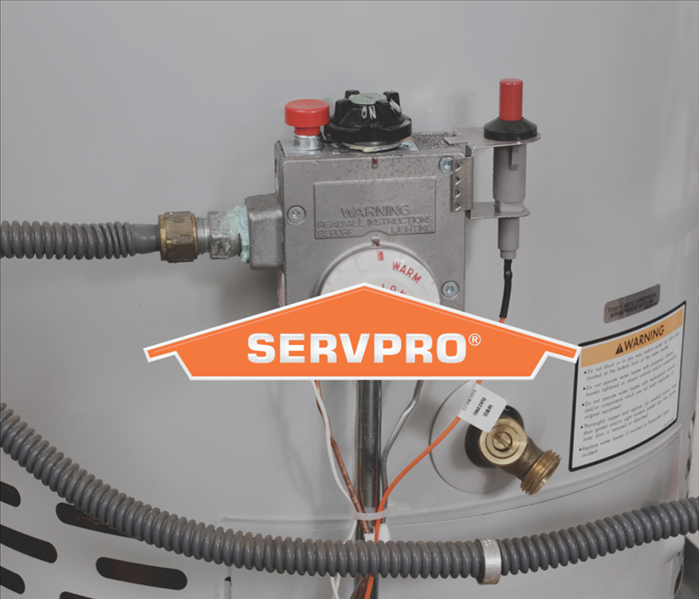 If you hear clanking and rumbling in your water heater, then it may be time for a flush.
If you hear clanking and rumbling in your water heater, then it may be time for a flush.
Is Your Water Heater Making Noises?
Water heaters can make all sorts of rattling and rumbling noises, but you may not actually have to replace it! The trick is figuring out if the sound is normal or not!
Sediment builds up over time and causes clanking and rumbling when the water heater is heating the water.
When sediment builds up over time, it can cause clanking and rumbling sounds when the water heater is heating. This is because the sediment gets in between the heating elements, causing them to rub against each other. A simple way to fix this problem is by doing a tank flush. A tank flush will clean out any excess sediment from your tank and should take care of this issue for you.
Another common reason for noise or vibrations coming from your hot water heater could be due to excessive rusting in one or more parts of the unit’s interior components like its outer shell or insulation blanket as well as its inner gas burner assembly components such as valves and pressure relief valve (PRV). Rusting causes corrosion on some areas inside these components which may lead them to expand more than others causing uneven wear that creates vibrations when hot water passes through those sections during usage.
There are two ways to flush the water tank, a complete manual flush, or an automatic flush that flushes the tank as it heats.
There are two ways to flush the water tank, a complete manual flush, or an automatic flush that flushes the tank as it heats. In either case, you may need to leave your home for about 30 minutes while the tank is flushed.
- Manual Flush: You'll perform this procedure by turning off power to your water heater and draining all water from it. Afterward, fill up another storage container with cool water and pour it into your hot-water heater until full so as not to cause any dry start issues when you turn things back on again (more on this later). This should take about 20 minutes per gallon removed from the system; if necessary, repeat until all gallons are replaced with fresh cool water. Then turn power back on, set thermostat where desired temperature lies between 120°F and 140°F (around 55°C) and allow unit three hours before using hot water again.
- Automatic Flush: When you heat up your system after emptying out tanks manually—or automatically via an electrical connection—you'll hear a pumping sound emanating from somewhere inside your unit as liquid travels through pipes at high speeds.
Flushing your water heater will save you money over time by saving energy and extending the life of your water heater.
Flushing your water heater is an easy way to save money on energy and extend the life of your water heater. The average homeowner spends a few thousand dollars on a new hot water tank, so if you flush regularly and prevent sediment buildup, you can save yourself thousands in replacement costs. Flushing your tank also prevents any clanking or rumbling noises that might occur when sediment builds up inside the tank.
If you hear clanking and rumbling in your water heater, then it may be time for a flush. A complete flush can help reduce the amount of sediment buildup causing the noises and save money on energy over time by extending the life of your water heater.
What Could A Water Leak Be Costing You?
9/1/2022 (Permalink)
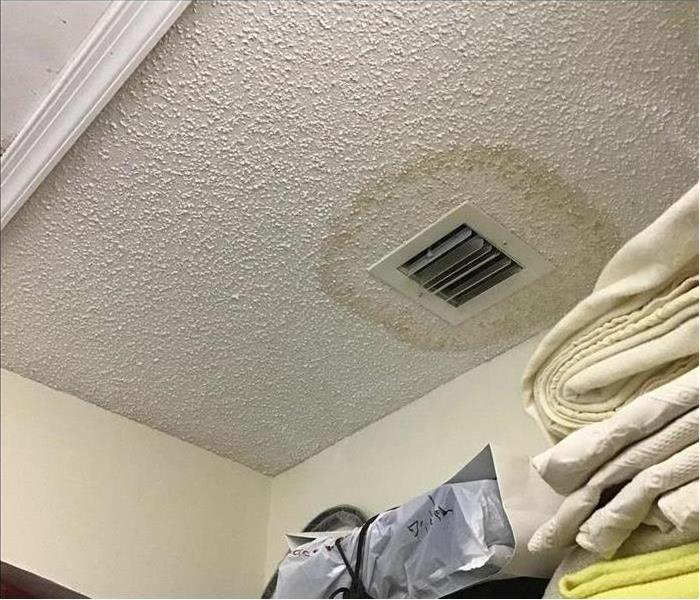 If you notice signs of a water leak, it is important you call our SERVPRO team as quickly as possible, it can quickly grow into big mold damage.
If you notice signs of a water leak, it is important you call our SERVPRO team as quickly as possible, it can quickly grow into big mold damage.
How Much Could A Water Leak Cost You?
While some leaks are very obvious and easy to discover, smaller leaks are often left undetected. Even when you're aware that there might be a problem, leaks behind walls, or in the ceilings or floors can be difficult to find. There are many ways a water leak in your building in Pompano Beach, FL, could be costing you money.
1. On Your Water Bill
The most obvious and direct way a water leak can cost you money is on your water bill. A slow dripping leak can waste between seven to ten gallons of water per day. Severe leaks can waste closer to ninety gallons per day. This all adds up on your water bill. By not addressing small leaks, you are wasting money. Take the time to fix leaks as you discover them. The cost of the repair will likely be less than the amount of money wasted by allowing it to continue to leak.
2. In Equipment Repairs or Upgrades
Leaks left unaddressed could lead to the need for pipe repairs and plumbing upgrades sooner than you would have needed them. A small leak can lead to a pipe break if allowed to go on long enough.
3. In Damages
Broken or leaky pipes can lead to damage to the structure of your building. Pipes are generally hidden behind walls or under floors. When a leak goes undetected, this allows time for the water to seep into the building materials. Water-soaked floors and walls can be susceptible to mold, often requiring extensive cleanup and repairs or rebuilding. Water damage specialists can help you recover from large leaks that cause major damage.
In the age of bills being automatically paid or deducted from bank accounts, it is still a good idea to review monthly charges for utility bills. A sudden spike in your water bill could be a clue that you have a water leak hidden somewhere. Consult a plumber to help locate the source of the leak and fix it as soon as possible to avoid wasting more money.
Water Damage Categories and What They Mean
7/26/2022 (Permalink)
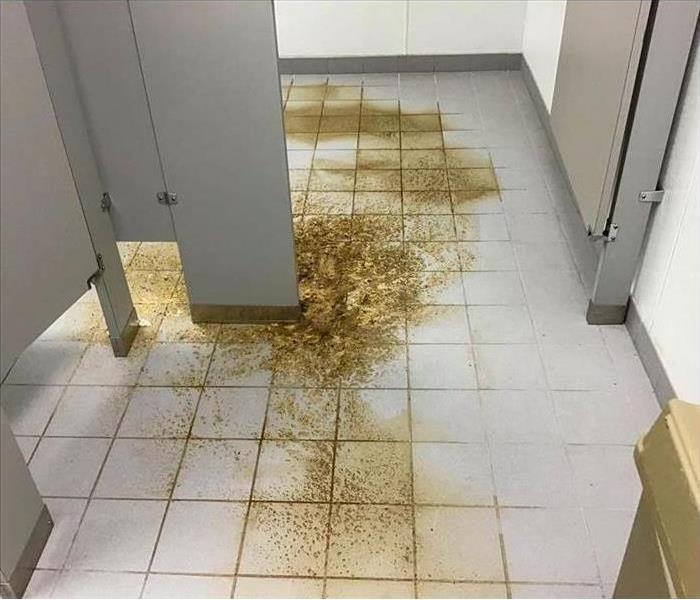 When your Deerfield Beach home experiences flooding or leak, there is no time to waste.
When your Deerfield Beach home experiences flooding or leak, there is no time to waste.
Water Damage Categories
Though water is translucent in color, it is very possible for it to be labeled either gray or black but not be either in color. When referring to water as gray or black, the reference is to the category of water damage.
There are three water damage categories: Clean, Gray, and Black. The source of the water is what dictates the classification. This classification aids in the restoration process as clean-up crews are aware of any physical or environmental risk of the water damage. Clean-up crews are also privy to the extent of restoration and cleaning that is necessary.
1. Clean Water
Clean water sources are seen as sanitary and include: water lines, faucets, and rainwater. Though this water is deemed clean, it is not safe for drinking nor is it recommended to deliberately stand it. Clean water or category 1 water, should be removed quickly as it can still lead to damage to items in the affected area or building materials. Category 1 water can also accumulate bacteria when left stagnant, turning it into a category.
2. Gray Water
Gray water, also called category 2, comes from sources that contain traces of contaminants but is not immediately dangerous. This includes water from dishwashers or toilets. Coming into contact with this water can pose health risks if proper equipment is not used when cleaning up this water and associated damage.
3. Black Water
Black water is the most dangerous water with serious implications for health and structural damage if not safely approached. Sources from black water, also known as category 3 contain highly toxic contaminants. These sources range from sewers, rivers, or stagnant water.
The different categories of water provide further insight into how to handle each water damage situation and the level of caution to take. All categories have very serious consequences to your Deerfield Beach, FL home and its contents if water damage restoration does not occur quickly.
Do These 5 Things If You Find a Leak Under Your Sink
5/21/2022 (Permalink)
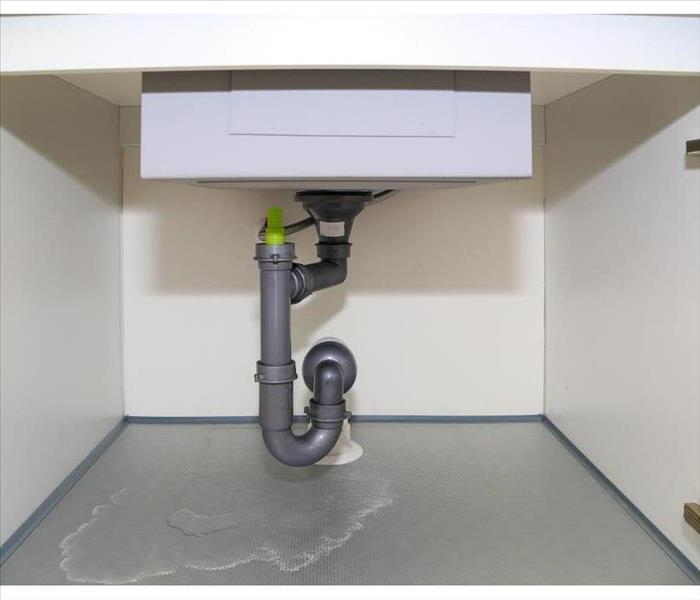 Act quickly if you discover a leak under your sink.
Act quickly if you discover a leak under your sink.
What To Do If You Discover a Leak Under Your Sink
If you discover a leak under your kitchen sink causing flooding, act quickly to prevent damage to your Boca Raton, FL, home. A slow drip may seem like a mere nuisance, but if you don't take action to stop it, your house could be damaged and even develop mold. Here's what you need to do.
1. Try To Find the Leak
See if you can locate the leak so that a plumber can repair it quickly. Here's an easy test. Place paper sacks or a flattened cardboard box under the pipes. Wait and see where the water drips.
2. Prevent More Water in Home Damage
To prevent more flooding, shut off the water. There should be valves along the supply lines that feed water to your kitchen faucet. These will either be levers or shaped like a football. After shutting off the water, contact a plumber to do the necessary repairs.
3. Dry the Area
While waiting for the plumber, use towels to mop up as much water as you can. Turn on a fan and set it in front of the area to dry it. Placing an electric heater in the area will accomplish the job faster.
4. Call Your Insurance Agent
Contact your insurance agent to see if your policy covers damage from flooding as well as pay for your kitchen repair costs.
5. Call Restoration Specialists
To prevent a permanent smell and ensure the damaged area is completely restored, contact specialists in water damage repair. They'll make sure the area is completely restored and prevent a bad odor or mold from developing.
Nothing's more annoying than that dripping noise from a leaky pipe. Even worse, however, is the potential damage it could cause. Get proactive about fixing the leak. Hire professionals to clean up the mess, and your home will be good as new in no time.
Prevent Toilet Overflow Inside Your Business With These Tips
3/28/2022 (Permalink)
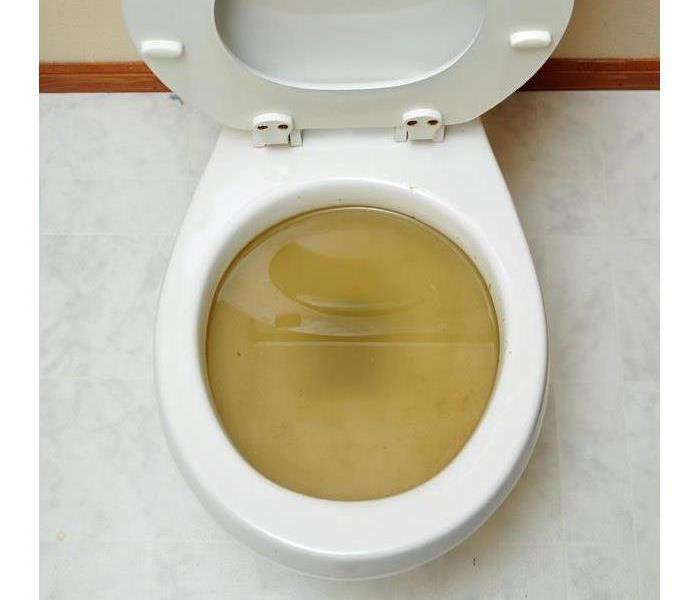 Inspections and preventative maintenance can prevent you from calling a commercial remediation team to repair water damage.
Inspections and preventative maintenance can prevent you from calling a commercial remediation team to repair water damage.
With These Tips, You Can Prevent Toilet Overflows In Your Business.
A clogged toilet at home is already a problem, but it increases when it occurs to multiple units at your West Delray Beach, FL, business. It is difficult to handle each one individually, and even some overflow is enough to damage the building. You can prevent many cases of toilet blockage and future issues by following these bathroom maintenance tips.
Use Improved Products
The quality of the products used on the toilets is important, as they can affect whether they get clogged easily. For example, using a thinner toilet paper can help since users will sometimes flush it down in large quantities. A thin material will disintegrate faster and flush down with ease. Additionally, avoid chemical drain and tank cleaners whenever possible. These products can damage the components and create clogs and other issues. Use mechanical cleansers like plungers or augers instead.
Change User Behavior
While you cannot control how the users act, you can encourage better behavior. Prevent a clogged toilet by putting up signage that encourages practices such as:
- Avoiding the flush of any non-toilet paper products
- Flushing down only small objects
- Performing a double flush after any use
- Treating the equipment with respect
There are also more subtle ways to influence behavior. For instance, installing a wider wastebasket near a toilet can convince a user to throw away any non-plumbing friendly items to it instead of disposing of it via the toilet.
Conduct Regular Inspections
Just as any piece of equipment in your facility, the toilets and other bathroom appliances need constant inspections to ensure they are working properly. Technicians should inspect the toilets at least twice a year. It is also important to inspect the sewage system since a toilet overflow can be the sign of a bigger problem, such as tree roots blocking the pipes. Inspections and preventative maintenance can prevent you from calling a commercial remediation team to repair water damage.
Preventing blockage formation within your business's toilets can be overwhelming, but not impossible. Use this advice to prevent several clogged toilet cases and avoid high costs.
When and When Not To Handle Toilet Overflow On Your Own
1/11/2022 (Permalink)
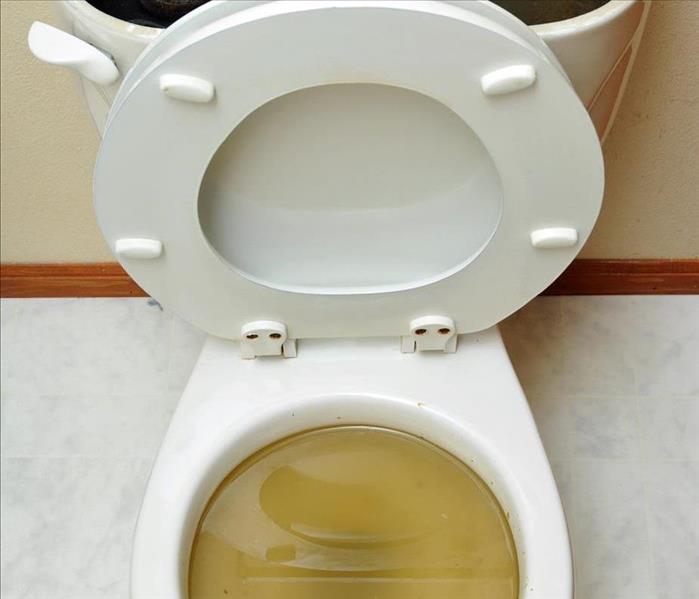 SERVPRO has the tools and equipment necessary to deal with sewer damage in a safe and efficient manner.
SERVPRO has the tools and equipment necessary to deal with sewer damage in a safe and efficient manner.
When To Handle Toilet Overflows On Your Own And When Not To
If you're dealing with a flooded toilet, you should almost always call in for backup. This is because toilet water may or may not contain viruses, bacteria and other harmful contaminants. Your local Delray Beach, FL sewage company has the tools and equipment necessary to deal with sewer damage in a safe and efficient manner. That said, if you really want to know if it's necessary to call in the professionals, you need to understand the different types of water you may be dealing with and where each type comes from. There are three types of water:
- Clean water
- Gray water
- Black water
Clean water is the only type of water you should attempt to clean up on your own.
Is It Clean Water?
You will know you are dealing with clean water, or category one water, if the leak is coming from a supply line or a leaking faucet. However, clean water can quickly become contaminated if allowed to sit for a certain period of time in certain conditions. It can also become dirty if it comes into contact with contaminants, such as soaps, detergents or chemicals. Clean water is safe to handle on your own, but only if you catch it before it becomes contaminated.
Is It Gray Water?
Gray water typically stems from a toilet overflow of water that has urine but no feces, a dishwasher mishap or a washing machine overflow. Though you may feel comfortable with the contaminants in gray water, health professionals warn against cleaning this type of sewer damage on your own. Many household cleaners and products can cause illness or discomfort when mixed with water. Gray water can also become black water if left untreated.
Is It Black Water?
Black water is the worst kind of water and does contain harmful contaminants. If you attempt to clean up black water on your own and without the proper tools and protective equipment, you put yourself at risk of developing severe illness. Depending on the contaminants, you may put yourself at risk of death. Black water may be water that contains feces, harsh chemicals or microbial growth.
If you don't know the source of your sewer damage, contact a professional water cleanup crew. If you know the water is gray or black water, contact a professional.
4 Ways To Minimize the Risk of Dishwasher Leaks
11/30/2021 (Permalink)
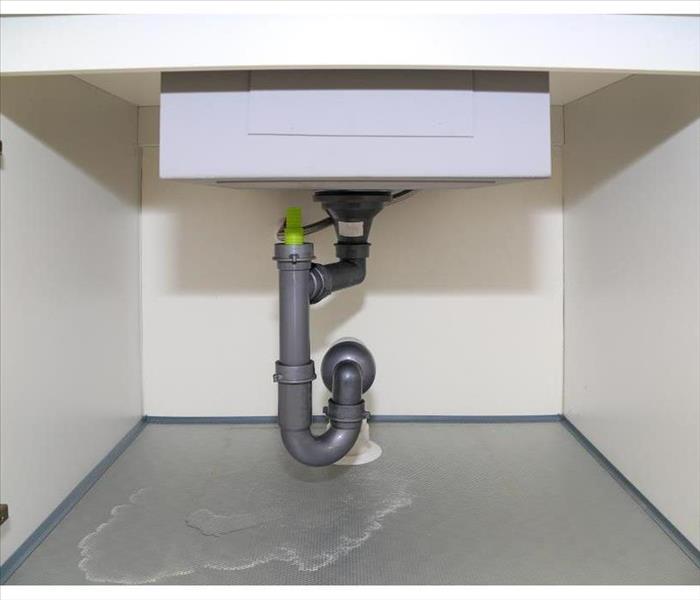 SERVPRO has a team of trained restoration technicians who know the exact steps to take after you've experienced water damage.
SERVPRO has a team of trained restoration technicians who know the exact steps to take after you've experienced water damage.
4 Ways To Reduce The Chances Of A Dishwasher Leak.
Dishwashers are extremely convenient kitchen appliances that many busy households in Hillsboro Beach, FL, may use frequently. However, if not properly installed or maintained, these machines can cause significant water damage. To help minimize the risk of a leaking dishwasher and reduce the need for extensive flood cleanup and restoration, you should employ the following four strategies.
1. Ensure Proper Installation
In order to operate efficiently, a dishwasher should be level with all four legs securely planted on the floor. An unbalanced machine can result in expediated wear and tear and internal warping that may contribute to leaks.
2. Use Recommended Detergent
There are numerous brands and formulas of dishwashing detergent available on the market, but it’s essential that you consistently utilize only products formulated for these appliances. Other solutions, such as liquid dish soap, may produce excessive suds. This can increase pressure on the door gasket and damage the water-tight seal, resulting in a leak.
3. Routinely Inspect Under Unit
Because many critical components reside under the unit, you may not notice symptoms of a leaking dishwasher until significant water damage has occurred. To help prevent this problem, you should routinely remove the front kickplate while the machine is operating and inspect for drips and dampness. If you discover a broken or loose clamp, seal or hose, you should promptly repair or replace it.
4. Evaluate Door Gasket
If you notice pooled water in front of your machine, a damaged door gasket may be the culprit. Water lubricates this important component and helps prevent it from cracking. For this reason, you should use your dishwasher at least once a week. It’s also important to routinely inspect the seal for signs of deterioration and replace it as necessary.
No homeowner wants to endure a messy flood cleanup. Employing these strategies can help you prevent or detect a leaking dishwasher before extensive water damage occurs.
How Does Water Damage Affect Building Materials?
11/15/2021 (Permalink)
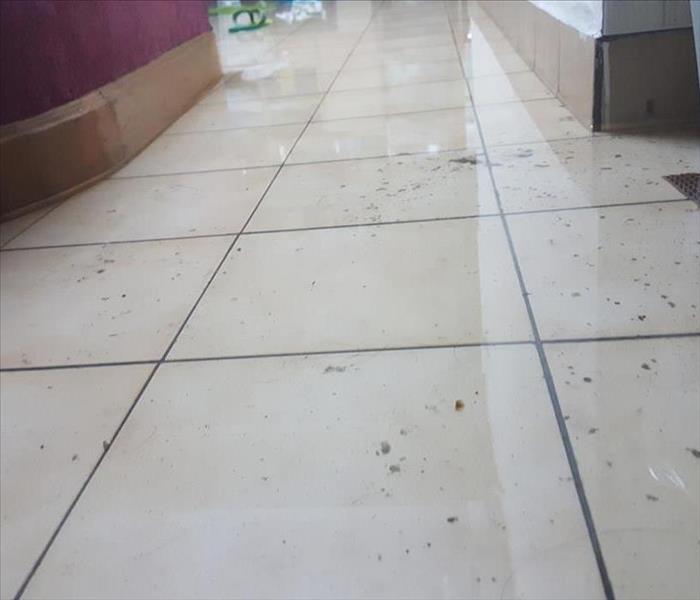 Take action to mitigate water damage as soon as it occurs at your home in Deerfield Beach, FL. Call SERVPRO, we are ready for your needs!
Take action to mitigate water damage as soon as it occurs at your home in Deerfield Beach, FL. Call SERVPRO, we are ready for your needs!
What Effects Do Water Damage Have on Building Materials?
Water damage affects various building materials in different ways. From crumbling drywall to swelling wood, here are a few of the effects that exposure to water can have on common materials.
Drywall
Water can begin to penetrate drywall within hours. This building material may react in several ways, including:
- Disintegration
- Swelling
- Supporting mold growth
Drywall exposed to water should be torn out and replaced only after the surrounding area is completely dry.
Flooring
Wood flooring and carpeting respond to water damage differently. Wood floors are particularly vulnerable after water permeates the polyurethane coating. You may observe some of the following effects:
- Cupping
- Swelling wood
- Splitting planks
Solid wood flooring may be restored through several methods, such as:
- Sanding
- Scraping
- Refinishing
- Removing and retrofitting planks
Regardless of flooring type, wet subfloors may need to be replaced. Moist concrete at the base should also be completely dry prior to restoration.
Carpet exposed to clean water from a supply line break may be dried if the damage is quickly discovered and mitigated. If carpet remains saturated for hours or days or is initially exposed to contaminated gray or black water, it should be torn out and replaced.
Metal
Metal may become discolored and begin to corrode within days or weeks of exposure to water. Rust-proof coatings may provide some protection.
Wood
Untreated wood may become stained within minutes or hours of exposure to water. Wood may start to split, swell, or warp within hours or days. Depending on the type of wood, duration of exposure, and structural significance, these components may need to be replaced.
Take action to mitigate water damage as soon as it occurs at your home in Deerfield Beach, FL. Contact a plumber for water pipe repair. A residential restoration service can advise you about swelling wood and which building materials can be safely restored or will need to be replaced.
4 Recommendations To Lower Water Usage and Save Your Business Money
9/26/2021 (Permalink)
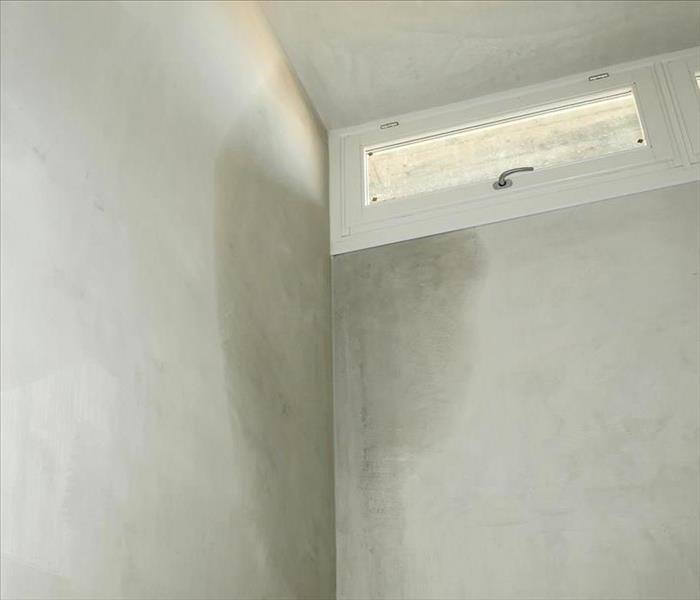 Even with smart practices, a professional water damage restoration crew may be necessary for the damage from water issues.
Even with smart practices, a professional water damage restoration crew may be necessary for the damage from water issues.
Water can be quite an expense for a Coconut Creek, FL, business. Not only is there an operation cost, but water issues from excessive wear can also lead to flooding that potentially closes off sections of your business. With these four recommendations, you can reduce your usage and slow down the deterioration of your utility system.
1. Seek Reasonable Alternatives to Water Cooling
Water is often used in businesses for cooling assets such as ice machines, compressors, condensers, or vacuum pumps. These products have variants that utilize air cooling for similar performance without water consumption. You should evaluate everything cooled in your business and determine if there are feasible alternatives.
2. Redesign for Efficient Landscaping
If your business has any green areas, you can take measures to save your green money. A helpful idea is to plant only vegetation that is native or can live with little watering. Additionally, by maintaining the soil’s health, your plants can retain any moisture and sustenance needed without waste.
If you live in a wet climate, recycling rainwater by collecting and storing it for future use can keep plants thriving. Without the risk of water issues from pipe wear, this natural liquid can be safer and more economical.
3. Compare Guidelines and Benchmarks in Your Industry
Trial and error can be costly. Fortunately, information is often available from other businesses in your industry. Expected usage benchmarks are publicly available, and studied sustainability reports provide information on the effectiveness of any water upgrade that others have tried and that you may be considering.
4. Inform Employees About Water Efficiency
Your employees are vital for reducing your business’s water misuse. With their help, you can have your employees be mindful and maybe inform you of ways to save. A reminder alone can be effective for keeping people vigilant of wasteful habits.
Even with smart practices, a professional water damage restoration crew may be necessary for the damage from water issues. Deterioration is inevitable from regular wear, but you can mitigate it beforehand. By cleaning up your business’s procedures, you can likely avoid having to deal with cleaning up a major flood later.
How To Replace a Leaky Toilet
6/29/2021 (Permalink)
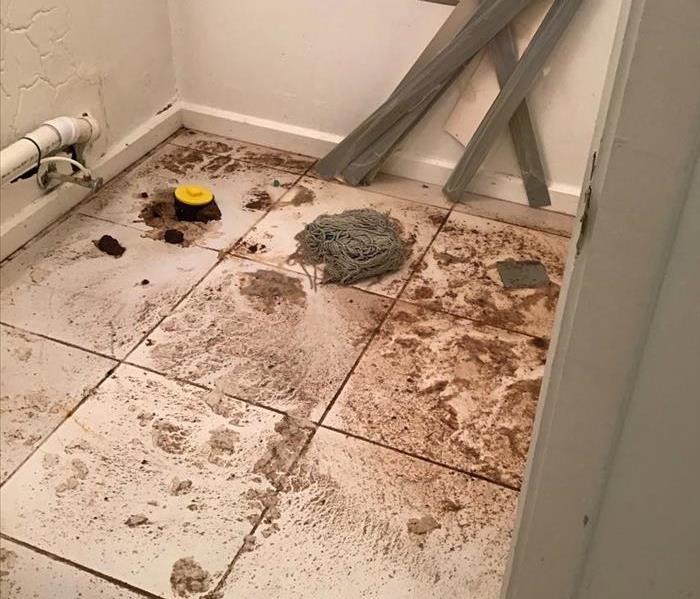 Sewage backup in Deerfield Beach, FL.
Sewage backup in Deerfield Beach, FL.
How To Replace Your Own Toilet
It’s never a good sign when you have a leaking toilet in your home. The leak can become a major flood if not taken care of quickly. Follow these steps to learn how to replace your own toilet.
Removing the Old Toilet
Before you can install a new toilet, you have to remove the old one:
1. Measure the distance from the wall to the bolts on the base of the toilet and from the wall to the side of the bowl to ensure your new toilet is the correct size.
2. Turn off the water.
3. Flush to remove the water from the tank.
4. Take the tank lid off and wipe up leftover water.
5. Disconnect the water supply line from the tank, unscrew the nuts, and lift it off the bowl.
6. Wipe up leftover water inside the bowl and remove the nuts at the base.
7. Lift the leaking toilet up and set it onto a garbage bag.
8. Remove the wax ring from the drain hole, clean out excess wax, and put a wad of paper towel into the hole to prevent sewer gas from venting.
9. Clean the floor if needed, remove the old closet bolts, and replace them with new ones.
Installing the New Toilet
Now it's out with the old and in with the new. Here's how to install your new commode:
10. Warm up a new wax ring with warm water and place it onto your new toilet.
11. Remove the towel from the drain hole. Carefully place the toilet onto the hole. If you miss it, it’s better to start with another new ring. Gently wiggle the toilet so it’s flat on the ground and aligned squarely with the walls.
12. Install any necessary hardware to the new tank, set it onto the bowl using a level, and tighten the bolts.
13. Connect the water supply, slowly turn the water back on, and check for leaks.
Every homeowner will likely face issues with an old toilet at some point. When it becomes a leaking toilet, follow these steps to replace it yourself or call a local toilet repair company in Deerfield Beach, FL, to ensure everything is done correctly and avoid the risk of future flooding.
Is Mold Lurking in Your Deerfield Beach Home?
6/7/2021 (Permalink)
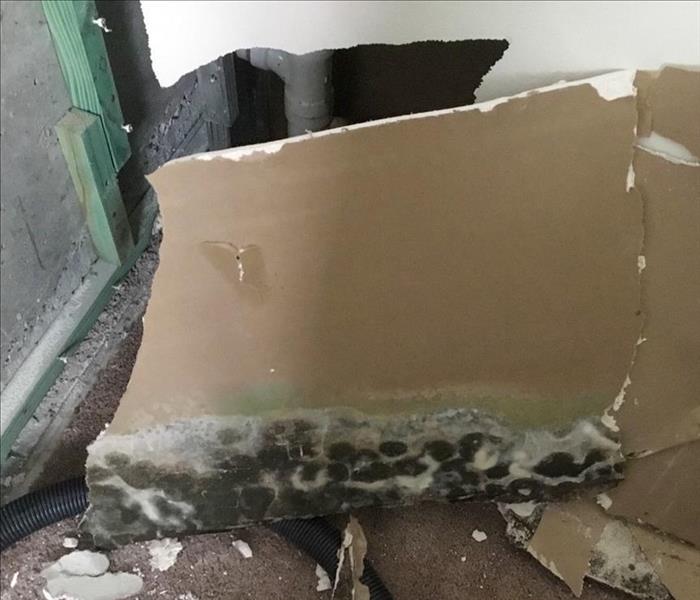 Mold is a prevalent issue many Floridians deal with.
Mold is a prevalent issue many Floridians deal with.
An undetected, lurking, costly pest: mold. All too often, many spaces in your Deerfield Beach home are the perfect environment for mold to foster. Mold thrives in damp and humid spaces, quickly spreading to many areas in as little as 24 hours. Knowing the cause of mold, where it grows, and what preventative measures to take can save your home from a mold infestation.
Mold is everywhere. It is found on our clothes, on our pets, in the air in our home. It is impossible to get completely rid of all mold spores, but it is possible to not allow any areas in your home become the perfect breeding ground. Areas that are often saturated with plenty of water and condensation are likely to be the first areas for mold. These include your kitchen, bathroom, and laundry areas. Cleaning up all water from the area when you have finished is recommended. Consistent inspection of pipes and water hoses is also encouraged as small leaks can quickly turn into areas remaining constantly wet.
Your garage and HVAC system are also common places that are prone to mold. Garages are often a damp space and HVAC systems that are not properly working can suffer condensation or water pooling. Once mold comes in contact with moisture on any material it can spread quickly. Many materials in your home, if not all, are subject to mold damage. This includes wood, walls, furniture, clothes and carpets.
If your home has suffered recent water damage or is going through the restoration process, be sure that all building materials and items that have come in contact with the water have been completely dried. Lingering moisture may go unnoticed, allowing mold to take place. This can be extremely costly to remediate the mold and potentially replacing many items that have been deemed unsalvageable.
Keeping mold at bay is not impossible. It just takes diligence on a homeowner’s end to be sure that: typically wet areas are dried, their appliances are working correctly and are not suffering any leaks and if they have experienced water damage to seek profession help.
Preventing Water Damage to Your Deerfield Beach Home
4/30/2021 (Permalink)
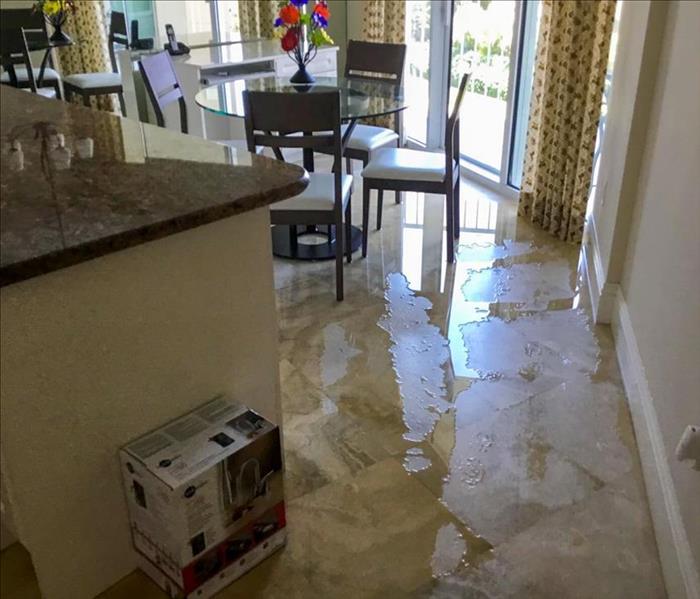 Immediate action is crucial when dealing with water damage.
Immediate action is crucial when dealing with water damage.
Staying Prepared for Any Water Damage to Your Home
A Deerfield Beach homeowner knows that maintaining a home can be costly and when accidents happen, costs are raised exponentially. Flooding and water damage are the most likely accidents for a homeowner to endure at some point. These situations can happen quickly and without warning. Perhaps during a repair in your bathroom a pipe bursts or a worn-down appliance begins to leak significantly. Whatever the source of water damage may be, regular inspection can help save on costs and headaches. As a good rule of thumb assessments should occur at least 2-3 times a year for any evident and potential sources of water.
Water lines and pipes can wear over time, eventually leaking or breaking all together. Inspect the pipes under your sink and water lines around your appliances or outside of your home. Make sure that there is no pooling around these areas or irregular condensation as this may be hinting at a potential near future issue.
Check your appliances to make sure they are running correctly, with no malfunctions, big or small. The list of appliances should include your dishwasher, refrigerator, washer and dryer, water heater and HVAC system. Appliances that are broken or having slight trouble properly working, can not only be a potential water emergency waiting to happen, they can also be a huge drain on energy costs. Frequent inspections will help catch any future issues and lead to needed maintenance or total replacement.
In your bathrooms and kitchen, be sure that there are no areas present to allow for leaks or pooling. This can mean making sure there are no cracks in your tub or shower and checking any surrounding grout for any holes or deterioration.
Inspecting your home’s foundation, roof, doors, and windows is also a smart move as these too face wear and tear over time. Your roof, in particular, endures many storms and hurricanes in Deerfield Beach. Being exposed to flying debris and heavy rains, roofs can develop holes or loose shingles, allowing water to enter the home. This goes for the gutters on your roof as well to ensure they are not blocked and allowing water to drain properly.
Maintaining your home should not cost more than your time. Occasionally inspecting your home can be the difference between a few minor repairs and a huge water damage emergency.
Water Damage Restoration Process in Deerfield Beach
4/28/2021 (Permalink)
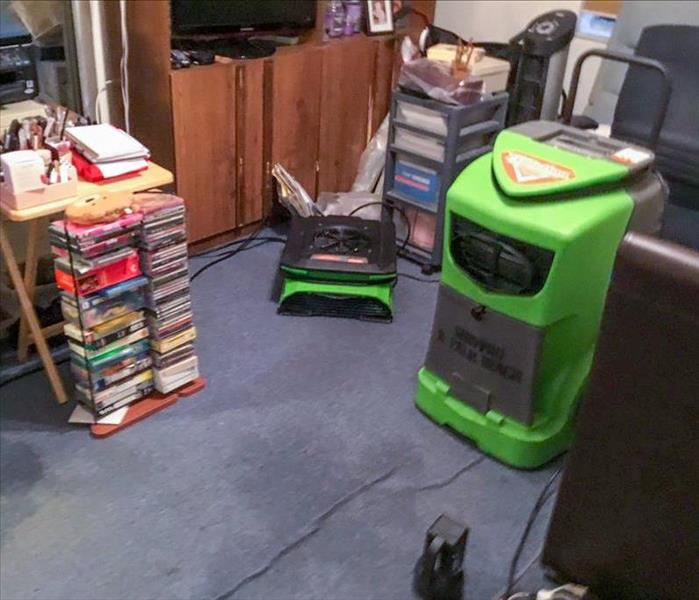 SERVPRO of Deerfield Beach has the equipment and experience needed to extract water.
SERVPRO of Deerfield Beach has the equipment and experience needed to extract water.
Responding to any calls for water damage quickly is what we do. Water that has entered the home has the potential to be a biohazard or safety hazard and can cause extensive damage in a short period of time. Our crew has had years of experience dealing with water emergencies and knows a proper restoration process is critical.
Assessment and Inspection
Once our team is on site, we walk through your home or building, inspecting the main affected area and those around it. We do this because we understand water is able to permeate many different materials and flow quickly to more than one area. When inspecting any potential damage, we look to the source of water and determine the category. This is especially important as different categories of water require different precautions and cleanup.
We also look for mold damage, whether it is existing or new mold, or an environment that would give mold the opportunity grow. With the right conditions, mold can develop in as little as 24 hours, spreading quickly and causing further damage.
Water Removal and Pack Out
After the completed assessment and our crew has walked you through what comes next, we begin water removal. During this step there is a probability that we will conduct a pack out of your home or building. This will help to sort and rid of any items that are not restorable. A pack out also mitigates any damage to items that were not affected. Our crew will then use heavy-duty, powerful pumps to remove hundreds of gallons of water from your property quickly.
Drying
Following the water extraction, dehumidifiers and air movers will placed throughout the damaged area for drying. At this time, our crew may remove building materials like drywall, insulation, carpet or wood. Due to the porous characteristics of these materials, water has likely infiltrated your walls or floors. Thorough drying is not possible if these building materials are not removed, allowing the water to sit, creating secondary water damage.
Cleaning and Sanitizing
Using proprietary cleaning supplies and methods, we sanitize all valuables and areas that were included in the damage. Content restoration is also a service we provide during this time, if needed, to lessen the number of items you may need to replace. Our crew works to return your home or business to a healthy, inhabitable state.
Rebuild/Repairs
During the very last stages of this water damage restoration, repairs may be required to complete the job. This can include replacing your drywall and flooring or, based on the extent of damage, rebuilding whole areas. Whichever option is necessary, our team is trained and equipped to do so.
The length of time for each water damage restoration job can vary as can the steps required. Our team has experienced numerous water damage emergencies with different necessities for each. We do our best to work quickly and effectively, no matter the process, to get your Deerfield Beach, FL home or building back to pre-damage conditions.
Faster to your Deerfield Beach Water Damage Event
3/16/2021 (Permalink)
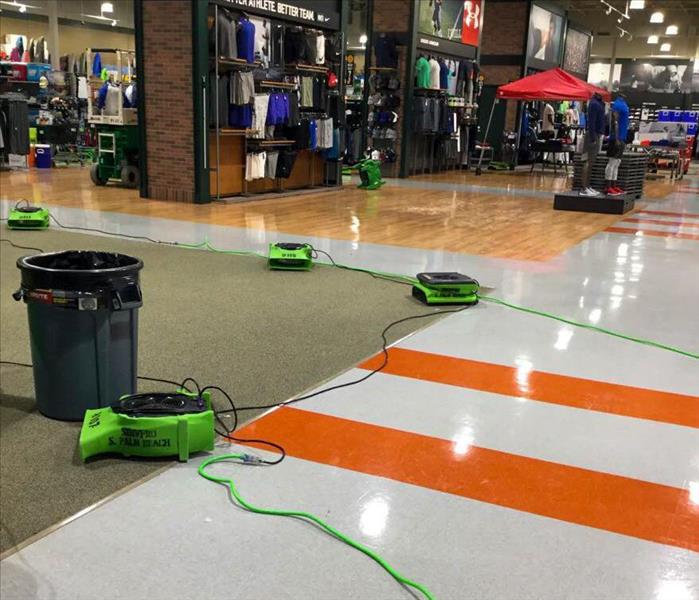 SERVPRO of Deerfield Beach has the training, experience, and equipment to handle large commercial flooding or water damage emergencies.
SERVPRO of Deerfield Beach has the training, experience, and equipment to handle large commercial flooding or water damage emergencies.
Flooding and water emergencies don’t wait for regular business hours and neither do we. SERVPRO of Deerfield Beach provides emergency cleaning and restoration services 24 hours a day, 7 days a week—including all holidays.
Faster To Any Size Disaster
Flooding and water damage is very invasive. Water quickly spreads throughout your home and gets absorbed into floors, walls, furniture, and more. SERVPRO of Deerfield Beach arrives quickly and starts the water extraction process almost immediately. This immediate response helps to minimize the damage and the cleaning and restoration costs.
Need Emergency Service? Call Us 24/7 –(954)-596-2208
Water Damage Timeline
Within Minutes
- Water quickly spreads throughout your property, saturating everything in its path.
- Water is absorbed into walls, floors, upholstery, and belongings.
- Furniture finishes may bleed, causing permanent staining on carpets.
- Photographs, books, and other paper goods start to swell and warp.
Hours 1 - 24:
- Drywall begins to swell and break down.
- Metal surfaces begin to tarnish.
- Furniture begins to swell and crack.
- Dyes and inks from cloth and paper goods spread and stain.
- A musty odor appears.
48 Hours to 1 Week:
- Mold and mildew may grow and spread.
- Doors, windows, and studs swell and warp.
- Metal begins to rust and corrode.
- Furniture warps and shows signs of mold.
- Paint begins to blister.
- Wood flooring swells and warps.
- Serious biohazard contamination is possible.
More Than 1 Week:
- Restoration time and cost increase dramatically; replacing contaminated materials and structural rebuilding may be extensive.
- Structural safety, mold growth, and biohazard contaminants pose serious risks to occupants.
About SERVPRO of Deerfield Beach
SERVPRO of Deerfield Beach specializes in the cleanup and restoration of residential and commercial property after a fire, smoke or water damage event. Our staff is highly trained in property damage restoration. From initial and ongoing training at SERVPRO’s corporate training facility to regular IICRC-industry certification, rest assured our staff is equipped with the knowledge to restore your Deerfield Beach property.
Deerfield Beach 24 Hour Emergency Water Damage Service
3/11/2021 (Permalink)
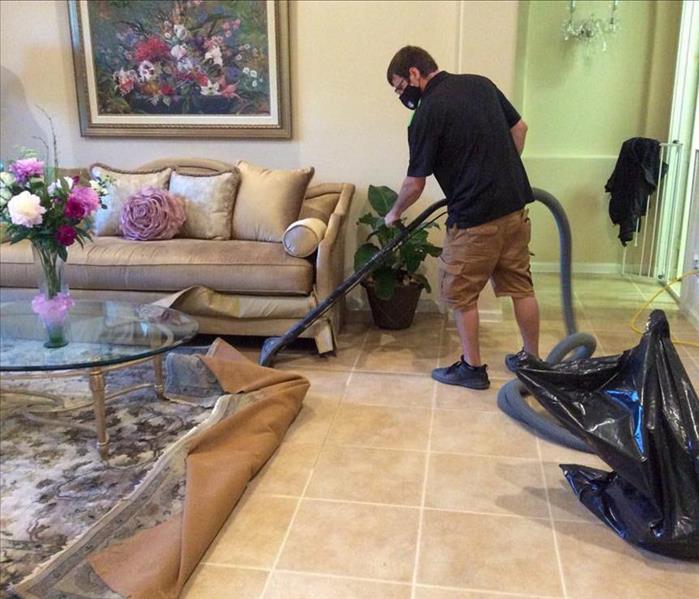 When your Deerfield Beach home experiences a flooding or leak, call SERVPRO of Deerfield Beach.
When your Deerfield Beach home experiences a flooding or leak, call SERVPRO of Deerfield Beach.
SERVPRO of Deerfield Beach is available 24 hours a day for water emergencies, large or small in the Deerfield Beach area. When you are dealing with water damage, immediate action is crucial. A delay of just a few hours can greatly increase the severity of the water damage.
We Answer the Phone Ready to Help
Call Today - (561) 856-1207
We understand that when you call us, you may be feeling confused, stressed, and vulnerable. You need an expert to guide you through this crisis. SERVPRO of Deerfield Beach has the specific water damage training and experience to help you through this tough time. We specialize in water damage restoration—in fact, it's the cornerstone of our business.
What to Expect
When you call, we will ask several questions regarding your water damage emergency. These questions will help us determine what equipment and resources to bring, including how many trained SERVPRO Professionals may be needed.
Our SERVPRO Representative will ask several questions:
- Your name and contact information
- Your insurance information (if applicable)
- The street address of the water-damaged home or business
- When did the flooding or water damage occur?
- What caused the water damage (if known)?
- Is there electricity available (on-site)?
About SERVPRO of Deerfield Beach
SERVPRO of Deerfield Beach specializes in the cleanup and restoration of residential and commercial property after a fire, smoke or water damage event. Our staff is highly trained in property damage restoration. From initial and ongoing training at SERVPRO’s corporate training facility to regular IICRC-industry certification, rest assured our staff is equipped with the knowledge to restore your property.
Does Filing a Claim Result in a Hike in Insurance Rates?
3/10/2021 (Permalink)
 Filing an insurance claim.
Filing an insurance claim.
Does Filing a Claim Result in a Hike in Insurance Rates?
There are many potential sources of water damage besides natural disasters. A pipe bursting because it froze from a sudden temperature drop may lead to a home flood in your bathroom or kitchen. Unnoticed drips from faulty gaskets can soak into floors, leading to large messes and mold growth before discovery. According to the United States Environmental Protection Agency, the average household experiences leaks that cause almost 10,000 gallons of water loss annually, with 10% of families wasting 90 or more gallons a day. That's a lot of liquid possibly saturating your house and causing harm. If you encounter such a circumstance, one of your first actions would probably be to contact your indemnity provider so you can get a professional cleanup and restoration service in Deerfield Beach, FL, to come out and begin handling it. However, you may be wondering if filing an insurance claim will raise your rates. The answer is, it depends.
There Are Other Factors That Matter
Whether or not your monthly payment goes up is largely situational. If you fall into certain categories, it will likely see an upsurge:
- You reside in an area prone to crime and severe weather
- You choose a liability claim over a property one, and it is not your first one
- Your home has a history of frequent claims
- The damage is extensive
The Price Leap Isn't Permanent
Your premium will probably go back down. Most companies will keep a record of the insurance claim for a number of years before lowering your rates again. They may never drop back to the original value though.
The Amount Rates Change Varies
This is dependent on how much of a risk you are perceived as. The considerations that impact whether you have to shell out more after a claim in the first place also influence how much more you must pay. A hurricane will probably cause your rates to soar in comparison with a small claim for a burst pipe.
Whether or not your insurance claim leads to a rise in your policy payments changes on a case-by-case basis. Greater likelihood of you needing to utilize your provider's services correlates to higher hikes.
 Do not allow water damage to go untreated. Early detection and resolution are the keys to water damage restoration.
Do not allow water damage to go untreated. Early detection and resolution are the keys to water damage restoration.


 24/7 Emergency Service
24/7 Emergency Service













